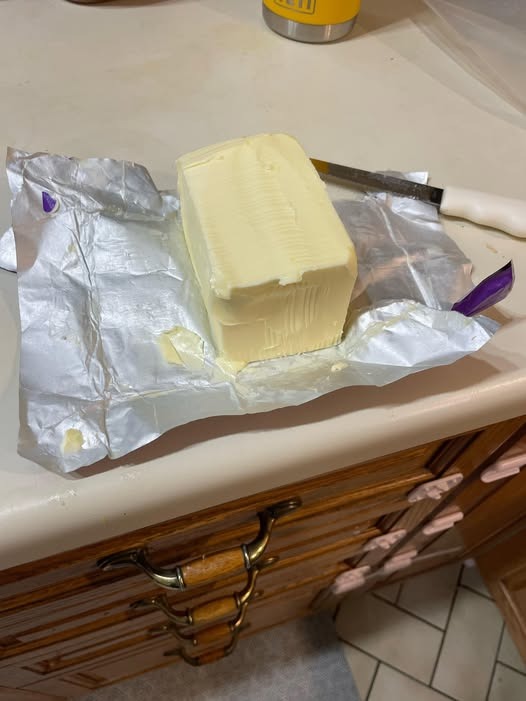1. Use a Butter Dish with a Lid
Keeps dust, light, and flies away
Prevents odors from the kitchen (looking at you, onion soup)
Choose ceramic or opaque materials to block sunlight (UV speeds rancidity)
2. Try a Butter Bell (or Butter Crock)
This clever French invention uses water as a seal:
Fill the base with cold water
Place butter in the lid (bell-shaped cup)
Submerge the bell into the water—the airtight seal keeps butter fresh
Change water every 2–3 days
Works beautifully for 2–4 weeks if kept cool!
3. Keep It Cool & Dark
Store your butter away from:
Direct sunlight
Stove heat
Dishwashers or ovens
Humid spots (like above the sink)
A drawer or pantry shelf? Perfect.
When to Say Goodbye: Signs Your Butter Has Gone Bad
Even well-stored butter won’t last forever. Watch for these red flags:
Rancid smell – Sharp, sour, or “off” odor (not just creamy anymore)
Sour or bitter taste – Take a tiny lick. If it tastes “wrong,” toss it.
Discoloration – Yellow turning pale, greyish, or spotty
Mold – Fuzzy spots = definite discard (even if only on surface—butter can trap mold roots)
Note: A little darker color around edges? That’s oxidation—not harmful, but a sign it’s aging.
Speed Up Softening Without Risk
Need softened butter fast? Skip the microwave meltdown.
Try these safer methods:
Cut & Wait
Chop cold butter into small cubes.
Let sit at room temp for 15–20 minutes.
Grate It
Use a box grater to shred cold butter.
Melts into batters instantly and softens in minutes.
Microwave (With Caution)
Use 10% power in 10-second bursts.
Stop when slightly soft—not melted or hot.
Salted vs. Unsalted: What’s Safer at Room Temp?
Salted Butter
Yes, up to 1 week
Yes
Unsalted Butter
SEE NEXT PAGE
ADVERTISEMENT

